Inside The New York Botanical Garden
Programs and Events
Posted in Programs and Events on June 5 2009, by Plant Talk
Mannahatta Author Tells of Uncovering the Natural History of the City
 |
Eric Sanderson, Ph.D., is a landscape ecologist at the Wildlife Conservation Society. His acclaimed book Mannahatta: A Natural History of New York City reconstructs through words and images what the island of Manhattan looked like in 1609 when Henry Hudson arrived. He will discuss his project in a presentation tomorrow, June 6, at 2 p.m. in the Arthur and Janet Ross Lecture Hall at The New York Botanical Garden and lead a walk through the Native Forest en route to viewing the wigwam in the Ruth Rea Howell Family Garden. This weekend is also the last chance to see the Garden’s spring exhibition The Glory of Dutch Bulbs: A Legacy of 400 Years.
|
 In 1998 I moved to the Bronx from out West, and the following year my wife, Han-Yu Hung, took a job at The New York Botanical Garden, working with kids in the Ruth Rea Howell Family Garden. Our son was born in 2000 and shortly after that, early every Saturday morning we would drive to the Garden together: my wife to work, my son to dig for worms, and me to wander in the woods. I never thought moving back East that I would find a forest (the 50-acre NYBG Forest) with a river running through it (the Bronx River, the only freshwater river left in the city) in the heart of the Bronx.
In 1998 I moved to the Bronx from out West, and the following year my wife, Han-Yu Hung, took a job at The New York Botanical Garden, working with kids in the Ruth Rea Howell Family Garden. Our son was born in 2000 and shortly after that, early every Saturday morning we would drive to the Garden together: my wife to work, my son to dig for worms, and me to wander in the woods. I never thought moving back East that I would find a forest (the 50-acre NYBG Forest) with a river running through it (the Bronx River, the only freshwater river left in the city) in the heart of the Bronx.
During the week I worked as an ecologist for the Wildlife Conservation Society, at the Bronx Zoo across the street, but in the evenings and weekends my mind was increasingly turning to what New York was like before it was a city, to a time 400 years ago when the Lenape, the local Native Americans, called Manhattan Mannahatta—or island of many hills—and the Bronx Wanaqua, after the river that ran through it. I spent my time in the library looking at old maps and in the Botanical Garden looking at old trees.
Though I didn’t know it at the time, ultimately the Mannahatta Project would take me nearly a decade to complete and teach me things about nature and the city that I never thought I would know. But in the meantime, I was doing another kind of research right here at the Garden, finding out for myself how the Lenape might have used the natural resources of the area.
Read More
Posted in Programs and Events, Wildlife on May 29 2009, by Plant Talk
Spring Brings Special Sightings
 |
Debbie Becker leads a free bird walk at the Garden every Saturday from 11 a.m. to 12:30 p.m., beginning at the Reflecting Pool in the Leon Levy Visitor Center. The last one for the season will be June 27.
|
Three fuzzy heads can be seen bobbing up and down in the red-tailed hawk nest. Just like Central Park’s Pale Male and Lola, our red-tails have made a neat little “cliffside” home at the top of a structure—in this case the Library building. It is interesting to watch mom and pop fly in with food to feed the babies. The hawks’ diet consists mainly of small mammals (such as squirrels and chipmunks) and birds, keeping the balance of nature in check. The female red-tail seems to find mockingbirds a special treat and has resorted to robbing mockingbird nests. Recently, we saw the red-tail perched atop the Watson Building with a baby mockingbird in her talons and mother mocker desperately trying to get mother hawk to free her prey. The mocker aggressively attacked the hawk, but in the end the hawk had a meal for her babies and the mocker went home to an empty nest. It is the circle of life.
While searching for warblers in the Forest we were treated to a very rare sight at this time of year: Our well-hidden female great horned owl flew from her perch followed by her fledgling. We were able to follow the mature owl to a new perch but lost the young owl in the leaves. As we watched the mom settle in, she kept looking around for her baby. Suddenly she looked forward and began to hoot. Then she turned her head right and hooted and then left and hooted. I guess she heard the young owl reply, because she closed her eyes and seemingly went to sleep.
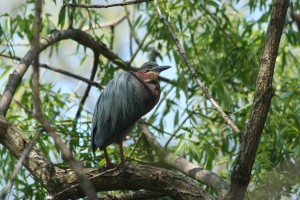 As the warbler numbers begin to dwindle, the birds having moved on to northern climes, we are grateful for another wonderful migration. Most of us were treated to the sightings of warblers such as black-throated blue, black-throated green, northern parula, Tennessee, chestnut-sided, bay-breasted, American redstart, common yellowthroat, yellow, prothonotary, and ovenbird. We also had warbling, red-eyed, and blue-headed vireos and a long list of other spectacular birds: Baltimore oriole, scarlet tanager, rose-breasted grosbeak, wood thrush, veery, hermit thrush, gray catbird, brown creeper, house wren, rough-winged swallow, bank swallow, tree swallow, chimney swift, eastern kingbird, great blue heron, great egret, night-heron, green heron (in full breeding plumage, see above photo, courtesy Debbie Becker), cormorant, wood duck (adults with 11 babies), mallard (adults with 12 babies) indigo bunting, cedar waxwing, savannah sparrow, ruby-throated hummingbird, eastern towhee, and northern flicker.
As the warbler numbers begin to dwindle, the birds having moved on to northern climes, we are grateful for another wonderful migration. Most of us were treated to the sightings of warblers such as black-throated blue, black-throated green, northern parula, Tennessee, chestnut-sided, bay-breasted, American redstart, common yellowthroat, yellow, prothonotary, and ovenbird. We also had warbling, red-eyed, and blue-headed vireos and a long list of other spectacular birds: Baltimore oriole, scarlet tanager, rose-breasted grosbeak, wood thrush, veery, hermit thrush, gray catbird, brown creeper, house wren, rough-winged swallow, bank swallow, tree swallow, chimney swift, eastern kingbird, great blue heron, great egret, night-heron, green heron (in full breeding plumage, see above photo, courtesy Debbie Becker), cormorant, wood duck (adults with 11 babies), mallard (adults with 12 babies) indigo bunting, cedar waxwing, savannah sparrow, ruby-throated hummingbird, eastern towhee, and northern flicker.
Read More
Posted in Programs and Events on May 15 2009, by Plant Talk
Plant Edible Bulbs, Weave Onion-Dyed Cloth, and More
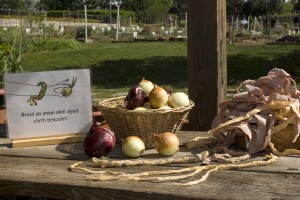 Here’s a sight not often seen at the Howell Family Garden: Toby Adams, Manager, holding back tears.
Here’s a sight not often seen at the Howell Family Garden: Toby Adams, Manager, holding back tears.
Truth be told, I didn’t see it either. One morning I wandered into the Family Garden by following the tasty smell of soup. Alas, it was not lunchtime. I learned instead, that in preparation for Bulbs Unearthed, part of the Dig, Plant, Grow! program at the Howell Family Garden, Toby and staff the previous afternoon had peeled several hundred onions in an act that must have made several grown men cry. Then they boiled the skins into a Macbethian brew of yellow and green dyes. Into this concoction went strips of cloth. After a brewing period, the fabric was set to dry in the sun. The end result of all that labor? Beautiful honey-colored material ready to be woven into bracelets by our visitors.
Our craft successes with onions so far have been most popular with folks with braiding experience. “More often than not, it’s the little girl teaching the father to braid,” staffer Junior Schoulton reports. Visitors not so adept at braiding, however, are welcomed to help our gardeners plant scallions or to use colored pencils to capture on paper the last tulip blooms fading from the meadow.
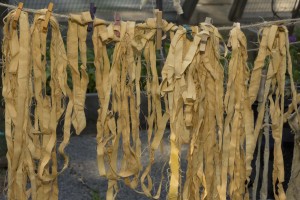 If all that isn’t enough, from 2 to 5 p.m. on June 6 and 7 staff from the Wyckoff Farmhouse Museum in Brooklyn will share traditional Dutch crafts with our visitors, such as they did this past weekend. The reception was enthusiastic: snacking on freshly churned butter with oregano, attempting to roll wooden hoops across the lawn, and decorating ceramic tiles were just a few of the activities the Wyckoff staff provided. Shirley, who happily operated the butter churn with the help of several visitors, confirmed the general enthusiasm. “The kids are loving it. Mostly it’s the parents who say, ‘That’s all there is to it? I’m going to make my own butter!’” Additional activities the Wyckoff staff will offer in June are apple pressing and ink-making as well as lessons in using quill pens.
If all that isn’t enough, from 2 to 5 p.m. on June 6 and 7 staff from the Wyckoff Farmhouse Museum in Brooklyn will share traditional Dutch crafts with our visitors, such as they did this past weekend. The reception was enthusiastic: snacking on freshly churned butter with oregano, attempting to roll wooden hoops across the lawn, and decorating ceramic tiles were just a few of the activities the Wyckoff staff provided. Shirley, who happily operated the butter churn with the help of several visitors, confirmed the general enthusiasm. “The kids are loving it. Mostly it’s the parents who say, ‘That’s all there is to it? I’m going to make my own butter!’” Additional activities the Wyckoff staff will offer in June are apple pressing and ink-making as well as lessons in using quill pens.
Although it’s a bummer to lose our tulip blossoms to the warming weather and heavy rain, I’ve noticed flowering onions’ purple tops puckering up by the pond. These gorgeous alliums allow the bulbs’ showy season to go out with a bang. My favorite bulb trick? Saving the giant alliums’ blooms to dry as Independence Day flower-fireworks!
Bulbs Unearthed will be featured in the Ruth Rea Howell Family Garden from 1:30 to 5:30 p.m. through June 7.
Check out all of Saturday’s programming
Check out all of Sunday’s programming
Posted in Exhibitions, Programs and Events on May 8 2009, by Plant Talk
Family Concert, Plein Air Painting, Dutch History, and More
 Gayle Schmidt is Manager of Public Education.
Gayle Schmidt is Manager of Public Education.

We can all appreciate the beauty of the Garden especially now in spring, but there is so much that goes on behind the scenes to make it what it is, especially the exhibitions. For months, the horticulturists at the propagation range have been chilling and forcing bulbs to make them ready for The Glory of Dutch Bulbs, another beautiful show. This weekend we share some of those tips as we celebrate bulbs and Dutch culture with additional tours and home gardening demonstrations as well as with special guest lectures and programs.
The inspiration for the exhibition is the recognition of the 400th anniversary of Henry Hudson’s discovery of the region, and the weekend’s lectures bring to light the history of how the Bronx has been changed since Dutch settlement. Local historian Peter Derrick from the Bronx County Historical Society describes how the area developed from Dutch farms to the few parks and wild spaces that remain today. Pat Ernest, former educator at the Bartow-Pell Mansion Museum, speaks about the original residents of the Bronx, the Lenape, as well as Jonas Bronck, the first European to settle in the Bronx, in 1638.
Peter Rose, author and scholar, explores how Dutch recipes and customs changed in the New World. Through a lusciously illustrated slide presentation on the food and drink seen in the paintings of the 17th-century Dutch Masters, we discover the connections to the food we eat today. Samples of some Dutch treats will be available on a first-come, first-served basis after this lecture, which is sponsored by the New York Council for the Humanities, a state affiliate of the National Endowment for the Humanities. These programs take place in the Ross Lecture Hall, where visitors can also view The Heirloom Tomato exhibition on display in the Ross Gallery.
In the meadow of the Ruth Rea Family Garden, Wyckoff Farmhouse Museum staff re-create a playful day in the life of early Dutch settlers. If you take the trails of the Native Forest to get there, you can imagine what the whole of New York City looked like before any development took place.
On Mother’s Day the Bronx Arts Ensemble presents a musical performance for families, The House That Ruthie Built: A Bronx Baseball Fairy Tale. The audience is invited to participate in the entertainment as they learn about musical instruments and are amused by the actors having fun on stage.
Each Sunday during of The Glory of Dutch Bulbs, instructors from the Continuing Education department will lead Art in the Open Air: Plein Air Landscape Painting at various locations on the Garden grounds. We invite visitors to take a moment to study the surroundings and capture its beauty on paper by their own hand. The instructors will be there to coach you along and show some of their talent.
Don’t miss the additional activities this weekend—you are sure to take away some new understandings!
Check out all of Saturday’s programming
Check out all of Sunday’s programming
Posted in Programs and Events on April 30 2009, by Plant Talk
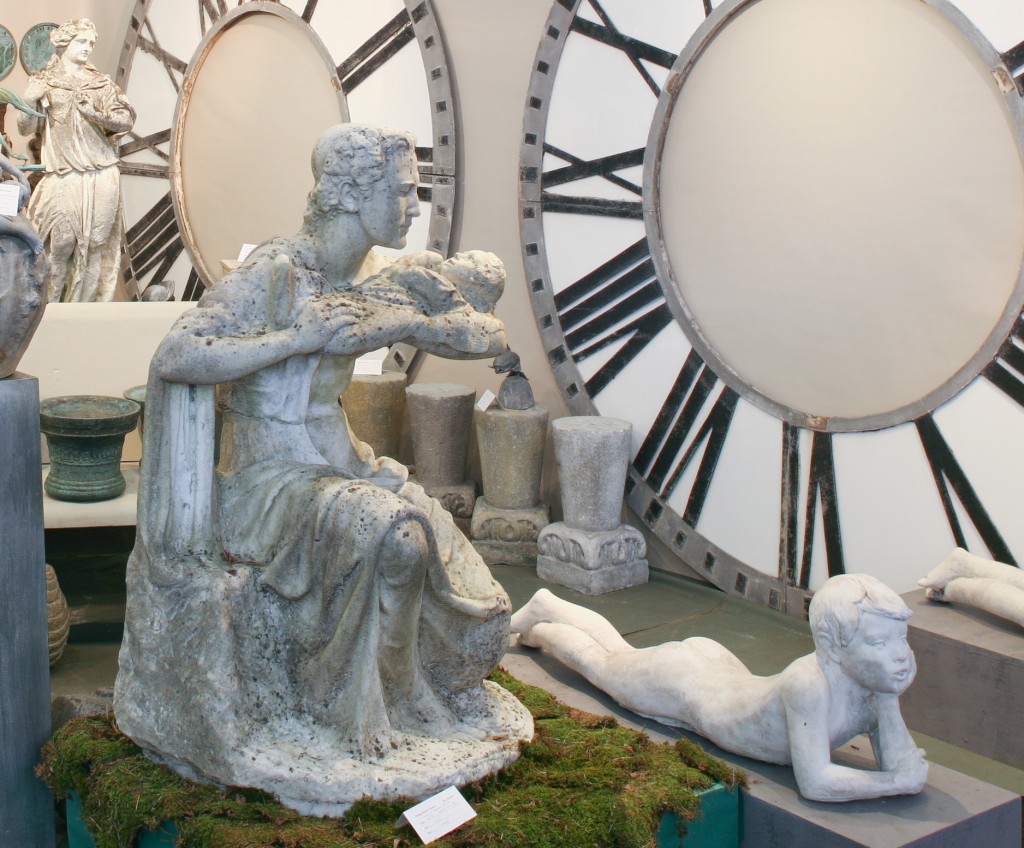
Leading Dealers Showcase Exquisite Pieces
Posted in Programs and Events, Wildlife on April 24 2009, by Plant Talk
Expect Warblers, Wood Ducks, More on this Weekend’s Bird Walks
 |
Debbie Becker leads a free bird walk at the Garden every Saturday from 11 a.m. to 12:30 p.m., beginning at the Reflecting Pool in the Leon Levy Visitor Center. This weekend, she’ll also lead a walk on Sunday, same time and place.
|
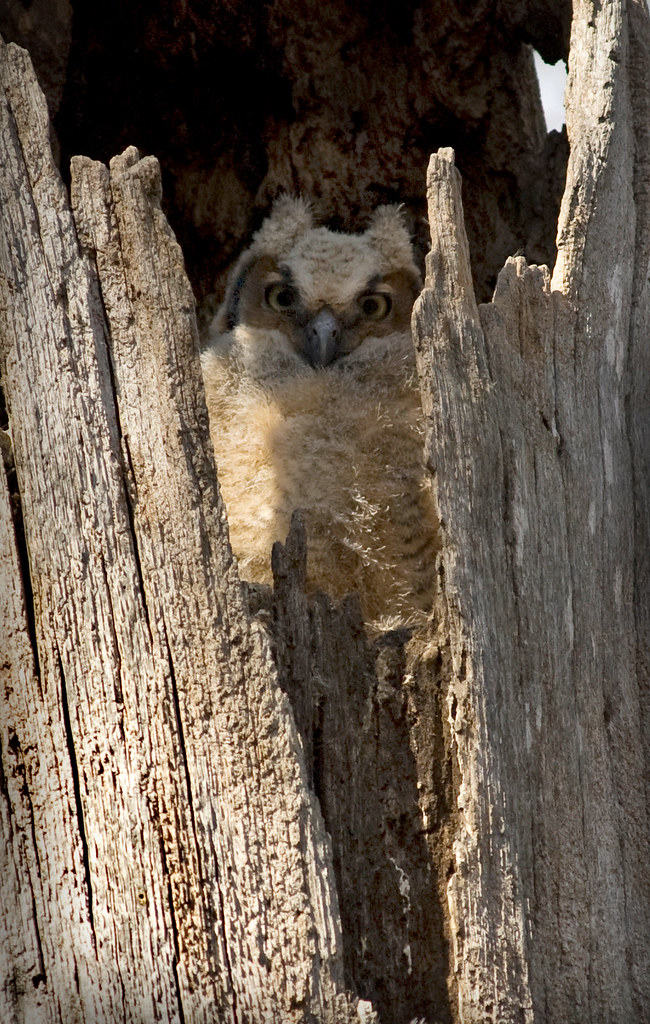 Spring has sprung at NYBG!
Spring has sprung at NYBG!
The phoebe, spring’s harbinger, has been singing its wonderful namesake song throughout the forest. Wood thrush are chiming in along with white-throated sparrows, tufted titmice, and cardinals.
While some birds are singing to lure a mate, some of our larger predators are already proud parents. Our red-tailed hawks appear to have one baby in their nest, built on a cliff-like shelf of the Library building. Mom and pop can be seen flying in and out with tasty morsels to feed the nestling.
Our baby great horned owls fledged their nest in the Forest. Last Saturday, only one baby was left in the nest (see photo) with Dad watching over him like a hawk (or should I say owl). The other owlet was somewhere in the Forest with Mom, learning how to fly and watching her hunt. Earlier this week, the second baby also fledged and now birders are treated to a spectacular show of watching them flap their brand-new wings and hop from branch to branch.
Warblers are beginning to invade the Garden. Some birders I know save all their vacation days for the last week of April and first week of May to look for these gems. Warblers are small, colorful birds that migrate from as far south as South America to the far northern reaches of the United States and southern Canada. Escaping predators and feeding on newly hatched insects, they travel up the eastern coast in the tens of thousands every April and May to their breeding grounds. This is the only chance each year to see these long-distance travelers in their brilliant breeding plumage, and birding NYBG gives you every opportunity to observe them. Last Saturday’s walk yielded a palm warbler, pine warbler, and yellow-rumped warbler.
To learn more about the birds at the Botanical Garden…
Read More
Posted in Programs and Events on April 22 2009, by Plant Talk
 |
Daniel Avery is Sustainability and Climate Change Program Manager at The New York Botanical Garden. |
 As an institution devoted to the celebration of Earth’s plant life—to the beauty and diversity and ecological importance of plants, to the role that plants play in making all life on Earth possible, to the million ways plants contribute to human health and happiness—The New York Botanical Garden is dedicated to the conservation of plants and the systems on which they rely. So nowhere is the cliché “every day is Earth Day” truer than here at the Garden. Our core institutional missions of education, horticulture, and science are, through the plant world, directly tied to a functioning and protected environment. This is why we strive to improve our own environmental performance (to be more sustainable, if you will) and to teach others how to do so as well.
As an institution devoted to the celebration of Earth’s plant life—to the beauty and diversity and ecological importance of plants, to the role that plants play in making all life on Earth possible, to the million ways plants contribute to human health and happiness—The New York Botanical Garden is dedicated to the conservation of plants and the systems on which they rely. So nowhere is the cliché “every day is Earth Day” truer than here at the Garden. Our core institutional missions of education, horticulture, and science are, through the plant world, directly tied to a functioning and protected environment. This is why we strive to improve our own environmental performance (to be more sustainable, if you will) and to teach others how to do so as well.
For those who visit the Garden to enjoy, say, the Holiday Train Show or the explosion of floral magnificence known as spring or some other such event, this broader perspective can be easy to miss. For that matter, even those of us who work at the Garden can slip easily enough into our individual niches and lose sight of the Garden’s broader environmental role—that, for example, our 250 acres of gardens, forest, wetlands, and green spaces nestled into a spectacularly urban setting provide many important environmental services we don’t always think about. Or that our scientists are contributing to conservation around the world. Or that our educators are spreading the word far and wide, including to the next generation of leaders, about the importance of understanding and protecting the world in which we live.
Earth Day should remind us of all this, of the ongoing and critical relationship between each of us (as people, as institutions) and our environment. It should remind us of what we do right, where we can improve, and, not least of all, why we care. There is no better place than The New York Botanical Garden to come and renew one’s love of Mother Earth on Earth Day. The Garden—indeed, any garden—thrives in that space where the natural world of soil, water, sun, and plants intersects with the human environment. And that, from an environmental and human perspective, is the intersection that matters.
So, here at the Garden we have decided to celebrate Earth Month, to give ourselves a little more time to linger over the relationship we share with the natural world. And we invite you all to join us to hear what we have to say and to share with us your thoughts on this most important of topics.
Posted in Programs and Events on April 14 2009, by Plant Talk
No School this Week? Come to a Our Special Programs
 |
Gayle Schmidt is Manger of Public Education. |
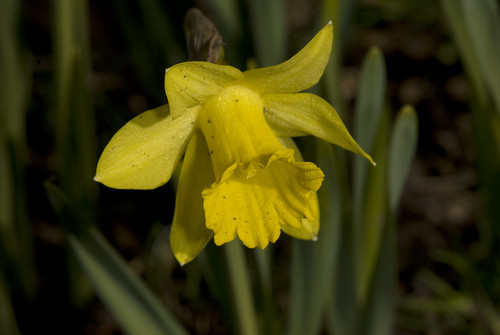 I am a little confused about spring—is it here or not? The wacky weather makes me think that it is not quite here yet, but the daffodils are coming up and green leaf buds on some trees are starting to show. Besides that, there are also many more children visiting the Garden on their spring break! We have rolled out a new series of programs just for families who are looking for something fun to do during the time off from school.
I am a little confused about spring—is it here or not? The wacky weather makes me think that it is not quite here yet, but the daffodils are coming up and green leaf buds on some trees are starting to show. Besides that, there are also many more children visiting the Garden on their spring break! We have rolled out a new series of programs just for families who are looking for something fun to do during the time off from school.
Break for Biodiversity is packed with tours, self-guided adventures, and workshops that showcase the variety of plant life around us. Our docents will guide you through the Native Forest and point out features of trees that make them different from one another and that explain the benefits of these differences. Bring your binoculars for the bird walks this weekend so that you can easily spot the fuzzy new additions to the great horned owl family and the other wildlife that the Garden supports. During the Herbarium Specimen-Making Workshop, you will learn about the “library” of pressed plants of species from around the world and make a specimen to start your own collection.
After all these exciting plant discoveries, I am sure you will be curious to find out how you can be a botanist or horticulturist, too. You will have the chance to sit down with one of our researchers at Café Scientifique to learn what it is like to work in the field, collecting and studying plants.
So come out and enjoy the fun programs. Even if there are some April showers, the Enid A. Haupt Conservatory and Everett Children’s Adventure Garden have plenty of plants and activities to explore indoors.
Posted in Programs and Events on April 3 2009, by Plant Talk
Gardening and Crafts Welcome the New Season
 Annie Novak is coordinator of the Children’s Gardening Program in the Ruth Rea Howell Family Garden.
Annie Novak is coordinator of the Children’s Gardening Program in the Ruth Rea Howell Family Garden.
Spring is a waking season. Several days ago the staff and volunteers of the Howell Family Garden gathered for breakfast to welcome the start of 2009 and swap stories of our winters. Our true “new year” starts in March. Fueled by a little food and conversation, we set to work hauling compost, trimming back leaves, and assisting Dave Vetter, our head gardener, in his mighty task of starting several hundred vegetable seedlings.
Although in nature it’s usually the fall we think of as a time of great transformation, spring surprised us this year by giving the Family Garden a bit of a facelift. Three years ago we built a Lenape wigwam, last year we built a green-roofed rabbit hutch, and this year Dave Vetter, Family Garden Assistant, and Han Yu Hung, Children’s Gardening Program Garden Coordinator, are humming happily inside our new greenhouse. The Family Garden’s newly built “hoop house” was designed over the winter by Toby Adams, Family Garden Manager. Admiring it for the first time, staff and volunteers ooh’d and aah’d and promised not to accidentally tear open its double-plastic sidewalls with a careless pass of a garden fork. As the day grew cooler with sharp winds, we huddled inside, where the air was warm and soil-scented. Maybe next spring our new building will be an apiary, where thousands of friendly bees can pollinate our vegetables, as they do all over the cities of Chicago, Toronto, and Seattle.
Watching the garden awaken is, to me, the best part of a temperate climate. I admire the flourish of a season like the fall, which gives way to winter with dramatic color. But I’m happier in the springtime when the warmth sneaks up on you, with delicate splashes of color in our green garlic shoots or the swollen buds of tulips and magnolia trees. We have robins all over the garden now, too, as the worms begin to move again through the gradually warming soil. And hurrah: Last Saturday, our visitors and families were back! The Children’s Gardening Program begins with new lessons on green living and healthy eating and old favorites celebrating the harvest and learning more about springtime birds and bulbs. Our afternoon programming, Family Garden Adventures, begins tomorrow, April 4, with the aptly named theme “Wake up, Garden!” Families are welcome to join us for gardening and craft activities from 1:30 to 5:30 p.m.
Recently, we read that the White House is building an organic vegetable garden on its South Lawn. Several of our staff and volunteers had clipped the article from the newspaper, and over our breakfast at our garden cleanup, we studied the garden plans. Would it be possible, I asked, to dedicate one of the children’s plots to mirror that of the Obama family’s? Toby agreed. (Although wouldn’t it be great if Michelle Obama’s plans emulated ours?) But truthfully, the best part of the Family Garden is how many hands go into helping us grow. Even a full White House staff can’t hope to compete with that!
Posted in Programs and Events, Wildlife on March 27 2009, by Plant Talk
Saying Hello to New Arrivals and Goodbye to a Friend
 |
Debbie Becker leads a free bird walk at the Garden every Saturday from 11 a.m. to 12:30 p.m., beginning at the Reflecting Pool in the Leon Levy Visitor Center.
|
 Spring has sprung at NYBG. The phoebe, spring’s harbinger, has arrived. A beautiful phoebe was spotted down by Twin Lakes bobbing its tail and calling. Ruby-crowned kinglets, brown creepers, and a juvenile eastern kingbird were also spotted on last Saturday’s walk.
Spring has sprung at NYBG. The phoebe, spring’s harbinger, has arrived. A beautiful phoebe was spotted down by Twin Lakes bobbing its tail and calling. Ruby-crowned kinglets, brown creepers, and a juvenile eastern kingbird were also spotted on last Saturday’s walk.
Perhaps the best indication of spring is seeing the mating rituals that some of the birds perform. The male mockingbird does a dance on the lawn by extending his wings and flashing his white stripes. The female, who looks exactly like the male, is an onlooker who watches from afar. She may judge him on his display or wait further to hear the kaleidoscope of songs that emanate from his vocal cords when he is high atop a tree. Many mockingbirds mock sounds they hear in their vicinity. NYBG mockers often imitate the other birds at NYBG along with alarm systems from cars and sometimes screeching—like the sounds a child might make. The female only mocks in the fall, leaving the spring air open for her suitor’s song.
Read more about birds at the Garden and check out all of this weekend’s programming after the jump.
Read More

 In 1998 I moved to the Bronx from out West, and the following year my wife, Han-Yu Hung, took a job at The New York Botanical Garden, working with kids in the Ruth Rea Howell Family Garden. Our son was born in 2000 and shortly after that, early every Saturday morning we would drive to the Garden together: my wife to work, my son to dig for worms, and me to wander in the woods. I never thought moving back East that I would find a forest (the 50-acre NYBG Forest) with a river running through it (the Bronx River, the only freshwater river left in the city) in the heart of the Bronx.
In 1998 I moved to the Bronx from out West, and the following year my wife, Han-Yu Hung, took a job at The New York Botanical Garden, working with kids in the Ruth Rea Howell Family Garden. Our son was born in 2000 and shortly after that, early every Saturday morning we would drive to the Garden together: my wife to work, my son to dig for worms, and me to wander in the woods. I never thought moving back East that I would find a forest (the 50-acre NYBG Forest) with a river running through it (the Bronx River, the only freshwater river left in the city) in the heart of the Bronx.












